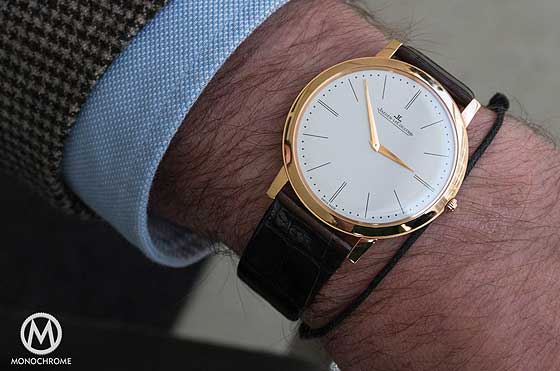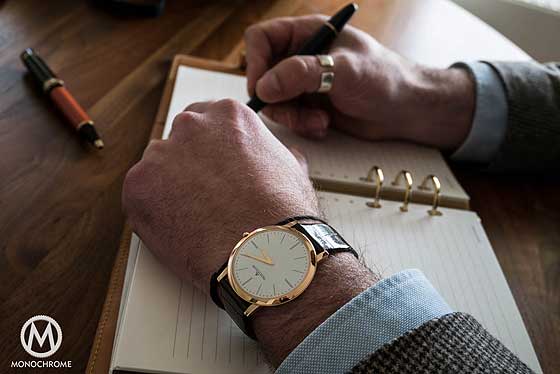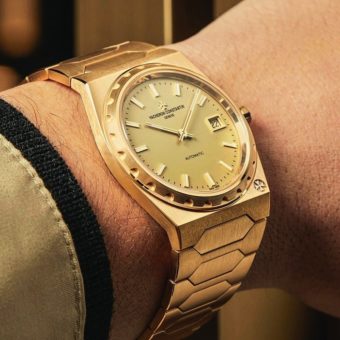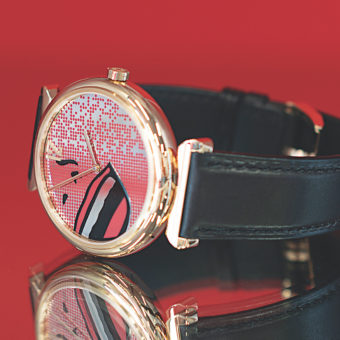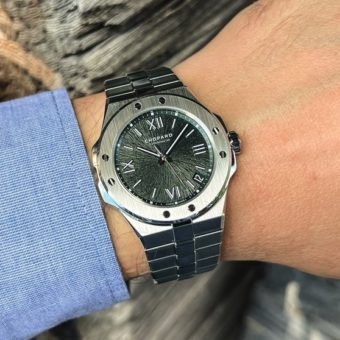We at Monochrome Watches do get our share of impressive timepieces to wear, but a watch that is (almost) the thinnest watch in the world still manages to impress. The Jaeger-LeCoultre Master Ultra-Thin 1907, introduced at SIHH 2014 in Geneva, is thin as a razor, superbly legible, and very stylish. We’ve reviewed this 4.05-mm thick (or thin) watch for you.
Before we tried it on, we wondered how it would feel on the wrist. At just over 4 mm in height, such a watch could well feel fragile, almost frighteningly thin to wear. The Jaeger-LeCoultre Master Ultra-Thin 1907 is the second iteration of this ultra-thin timepiece from this watchmaking grande maison in Switzerland’s Vallée de Joux. The first version, executed in platinum, was introduced as part of the 180 years Jubilee Collection that Jaeger-LeCoultre launched as tribute to Antoine LeCoultre in 2013. The Master Ultra Thin 1907 comes in a 39-mm rose-gold case that is just 4.05-mm thick.
This watch’s design did not come out of thin air (no pun intended). It was inspired by a vintage pocketwatch, and not just any old pocketwatch but the world’s thinnest pocketwatch (it still holds that record today). Rewind to 1903, when Edmond Jaeger, who would become the “Jaeger” in the brand’s name, was watchmaker to the French Navy. As such, he challenged Swiss watch manufacturers to develop and produce the ultra-thin movements that he had invented. It was Antoine LeCoultre’s grandson, Jacques-David LeCoultre, who accepted the challenge and manufactured a collection of ultra-thin pocket watches, including the world’s thinnest that was equipped with the LeCoultre Calibre 145. In 1937, the collaboration between Edmond Jaeger and Jacques-David LeCoultre led to the renaming of the LeCoultre watch company as “Jaeger-LeCoultre,” and that became the name printed on the dials.
Did you know that due to a complicated system of import duties in certain countries, notably the United States, Jaeger-LeCoultre sold watches in North America for decades under the old “LeCoultre” label. In Europe and the rest of the world, these watches were signed “Jaeger-LeCoultre.” The movements used in both the LeCoultre- and the Jaeger-LeCoultre-signed watches are identical. It wasn’t until 1985 that the name “Jaeger-LeCoultre” was adopted uniformly around the world. The Jaeger-LeCoultre Master Ultra-Thin Jubilee was the thinnest wrist watch in the world at the time of introduction. It has since been surpassed by Piaget’s Altiplano 38mm 900P. So, although the newest Master Ultra-Thin 1907 is not the world’s thinnest watch, it is still extremely thin.
Inside the watch ticks the world’s thinnest manually wound movement, Jaeger-LeCoultre Caliber 849. It comprises 123 parts and is just 1.85-mm in height. For comparison, take a ruler and check how thin 2-mm is. The movement is even thinner, and when fully wound it has a power reserve of 35 hours. Very impressive, in my opinion!
To keep the case slim, Jaeger-LeCoultre opted for a so-called knife-shaped case. That means its thickest part (if you can call 4.05 mm thick) contains the movement, the (snap-on) caseback and the sapphire crystal. The caseback is solid because adding a sapphire window to it would immediately increase the case thickness. The part around the case is thinner and used to screw the lugs onto. The case is strapped to the wrist with a glossy brown alligator strap, without any visible stitching, and a rose-gold tang buckle.
The dial is white, with a finely grained surface, and features printed minute dots, and stick hour markers, with double stick markers at 12, 3, 6 and 9 o’clock. The choice to go for printed markers is simple: applied markers would need additional height (the hands may not touch the markers) and that would be counter to the whole point of this watch. The hands are so-called dauphine hands and, as is typical for JLC, one side of each hand is sandblasted (or micro-blasted, hence not shiny) while the other half is polished.
On the wrist, the Jaeger-LeCoultre Master Ultra-Thin is superbly comfortable. It’s very light and, of course, ultra-thin. One thing that slightly bothered me is that the lugs are not bent downwards, and because of that the tips can be a bit sharp for your shirt, especially when the cuff is a bit tight.
In conclusion, this ultra-thin, über-stylish beauty is a perfect, classical dress watch. Even with less formal attire, it looks very good. The rose-gold case and hands have a lovely warm glow which is offset beautifully by the finely grained white dial. Since the only watch that is thinner, Piaget’s Altiplano 38mm 900P, is not a “classic” dress watch, this Jaeger-LeCoultre is probably the thinnest of this style of dress watch on the market. It retails for $18,600 in the U.S.
This article was originally published in 2014 and has been updated.

